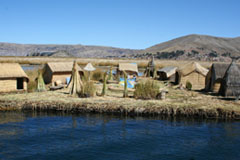Best of Peru
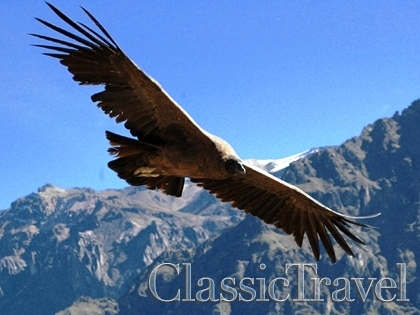
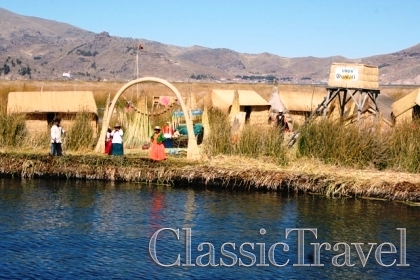
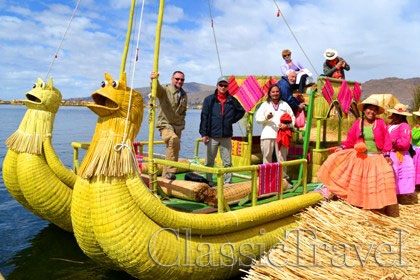


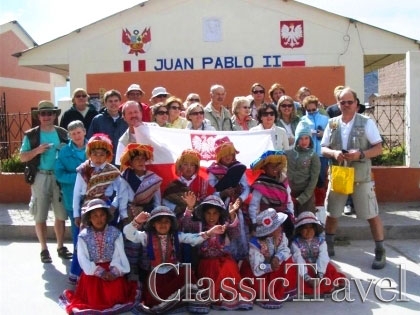
Best of Peru
Inti Raymi, Machu Picchu, Colca Canyon, Lake Titicaca
Lima, Cuzco, Machu Picchu, Arequipa, Colca Canyon, Puno, Lake Titicaca, Sacred Valley of the Incas.
-
Author: Danuta Gorecka (Trip Participant)Travel date: 21 JUN - 02 JUL 2017Date posted: 13 September 2017
-
Author: Iwona (Trip Participant)Travel date: 06/21-07/06Date posted: 21 July 2014
Add Comments or Review the Trip
Day 1 (Wed 6/21): Flight: Newark - Lima
Depart Newark Airport at 2:25pm on United Airlines non-stop flight to Lima. Arrive Lima at 9:35pm, meet with the local guide and transfer to selected hotel in Miraflores. Overnight.
Day 2 (Thu 6/22): Lima City Tour
After breakfast begin City Tour of Colonial Lima. Lima - "City of Kings" was built in the classic Spanish style by conquistadors four centuries ago as a port to ship Inca treasures out of Peru. You will visit: Plaza de Armas and its Cathedral, the Presidential & Bishop Palace; Plaza San Martin and the Court of the Inquisition. Famed as South America's best, the Archeological Museum is the most worthwhile visit. Free afternoon. Welcome dinner at a local restaurant. (B,D)
Day 3 (Fri 6/23): Flight: Lima - Cuzco & Cuzco City Tour
After early morning breakfast take a flight to Cuzco. Upon arrival transfer to our hotel. After check in, time for relaxation and acclimatization to the high 11,000 ft altitude. Afternoon begin City Tour of Cuzco the "ancient capital of the Inca Empire" and its ruins. We will visit Colonial Cuzco with it's cathedral, Santo Domingo Church, and more. Outside of Cuzco we will explore gigantic zigzag walled fortress of Sacsayhuaman, and ruins of Puca Pucara and Kenko. Dinner and folk show at a local restaurant. Overnight at our hotel. (B,D)
Day 4 (Sat 6/24): INTI RAYMI
During the entire day we will participate in historical celebration of the SUN - Inti Raymi - the God of the Incas. Box lunch. See separate description of Inti Ryami. Overnight at our hotel in Cuzco. (B,L)
Days 5/6 (Sun 6/25 - Mon 6/26): Exploration of Machu Picchu
Early morning board the train for the three-hour trip to the famous ruins of Machu Picchu (2,600m.a.s.l.), the beautiful Lost City of the Incas. Two days to explore the many temples, terraces and outlying sites, located in the lush high jungle above the Urubamba River gorge. Overnight at our hotel. Next day excursion to Inti Punku – The Gate of The Sun – to see sunrise. Optional tour - (depending on weather conditions) - Hike to the top of Wayna Picchu Hill. Free afternoon and then return train to Cuzco. Overnight at our hotel. (B,L; B)
Day 7 (Tue 6/27): Transfer: Cuzco - Juliaca - Puno
After breakfast we begin full day trip by bus to Puno via the Sacred Valley of the Incas. You will travel where Urubamba and Vilcanota Rivers curve their way between the high mountains and agricultural terraces. Box lunch. Upon arrival in Puno, we will check in our hotel on the shores of Lake Titicaca (12,500 feet). Puno is famous for its colorful folklore & music with hundreds of dances and songs. (B,L)
Day 8 (Wed 6/28): Lake Titicaca - Uros - Chivay/Colca Valley
Lake Titicaca is as legend says the birthplace of Manco Capac, the Founder of the Inca Empire. In the morning we will take a boat trip to the floating island of the Uros Indians. After optional lunch in our hotel, we drive via “altiplano” to Chivay (11,000ft), th capital of the Colca Valley and Canyon. If time permits, we will take a relaxing bath in local hot springs, where water comes from active geysers. Overnight & dinner at our hotel in Chivay. (B,D)
Day 9 (Thu 6/29): Colca Valley & Canyon
From early morning we begin exploring this forgotten valley, cultivating a life untouched by time. We will continue our journey west to the "Condor Cross" (5,000 feet deep), the beginning of the Colca Canyon. Twice the depth of the Grand Canyon (10,000 feet) the Colca Canyon is the deepest Canyon on the face of the Earth and provides some of the most dramatic scenery imaginable. Steep vertical walls surround you and open above to vistas of towering snowcapped peaks like "El Mismi", from whose northern slope the mighty Amazon River flows. After enjoying this dramatic view and flying overhead Condors, we check in to local hotel in Cabanaconde. From here we have optional trekking to the bottom of the Canyon, to the small oasis Sangalle (7,300ft), which will take 3-4h walking. Sangalle is called by many as a “Paradise on Earth” for its beauty and climate. Dinner and overnight in rustic dormitory. Rest of the group will stay in the hotel enjoying short walk of the Canyon edge. (B,L,D)
Day 10 (Fri 6/30): Colca Canyon - Arequipa
At 5:00am participants of the optional trekking will begin its walking journey up on the Canyon wall to our hotel. After arriving time for shower and full breakfast. After this unique experience we begin driving to Arequipa where we arrive after +- 5hours.
We will stop many times for photo – opportunities at the Colca Valley, which is covered by terraces. Check in to our hotel in the City colonial center. Farewell dinner at local folklore restaurant. (B,D)
Day 11 (Sat 7/1): City Tour of Arequipa & flight to Lima
This beautiful colonial city called "The White City" was built from the white stones of the near-by majestic volcano "El Misti". We will visit colonial downtown with its Plaza de Armas, Cathedral, San Francisco Church and famous Santa Catalina Convent, a remarkable relic of Spanish colonial times which lay inside the city in mystery for nearly 400 years. Late afternoon transfer to the airport for 1 hour flight to Lima. After arrival transfer to our hotel. Free evening for optional farewell dinner or shopping. (B)
Day 12 (Sun 7/2): Arrive in Newark
Dinner and breakfast on board. Arrival in Newark at 8:10am.
Abbreviations: B - Breakfast; L - Lunch; D - Dinner

Machu Picchu
A pre-Columbian 15th-century Inca site located 2,430 metres (7,970 ft) above sea level. It is situated on a mountain ridge above the Urubamba Valley in Peru, which is 80 kilometres (50 mi) northwest of Cusco and through which the Urubamba River flows. Most archaeologists believe that Machu Picchu was built as an estate for the Inca emperor Pachacuti (1438–1472). Often referred to as "The Lost City of the Incas", it is perhaps the most familiar icon of the Inca World.
The Incas started building the "estate" around AD 1400 but abandoned it as an official site for the Inca rulers a century later at the time of the Spanish Conquest. Although known locally, it was unknown to the outside world before being brought to international attention in 1911 by the American historian Hiram Bingham. Since then, Machu Picchu has become an important tourist attraction.
The Inca Empire
The Inca Empire (Quechua: Tawantinsuyu) was the largest empire in pre-Columbian America. The administrative, political and military center of the empire was located in Cusco in modern-day Peru. The Inca civilization arose from the highlands of Peru sometime in the early 13th century. From 1438 to 1533, the Incas used a variety of methods, from conquest to peaceful assimilation, to incorporate a large portion of western South America, centered on the Andean mountain ranges, including large parts of modern Ecuador, Peru, western and south central Bolivia, northwest Argentina, north and north-central Chile, and southern Colombia into a state comparable to the historical empires of the Old World.
The official language of the empire was Quechua, although hundreds of local languages and dialects of Quechua were spoken. The Inca referred to their empire as Tawantinsuyu which can be translated as The Four Regions or The Four United Provinces.
There were many local forms of worship, most of them concerning local sacred "Huacas", but the Inca leadership encouraged the worship of Inti—the sun god—and imposed its sovereignty above other cults such as that of Pachamama. The Incas considered their King, the Sapa Inca, to be the "child of the sun."
Cuzco
Cusco is a city in southeastern Peru, near the Urubamba Valley of the Andes mountain range. It is the capital of the Cusco Region as well as the Cusco Province. In 2007, the city had a population of 358,935 which was triple the figure of 20 years ago. Located on the eastern end of the Knot of Cusco, its altitude is around 3,400 m (11,200 ft).
Cusco was the site of the historic capital of the Inca Empire and was declared a World Heritage Site in 1983 by UNESCO. It is a major tourist destination and receives almost 1.5 million visitors a year. It is designated as the Historical Capital of Peru by the Constitution of Peru.
Inti Raymi
Inti Raymi ("Festival of the Sun") was a religious ceremony of the Inca Empire in honor of the god Inti, one of the most venerated gods in Inca religion. According to chronicler Garcilaso de la Vega, Sapa Inca Pachacuti created the Inti Raymi to celebrate the winter solstice and a new year in the Andes of the Southern Hemisphere. Since 1944, a theatrical representation of the Inti Raymi has been taking place at Sacsayhuamán (two km. from Cusco) on June 24 of each year, attracting thousands of tourists and local visitors.
Lake Titicaca
Lake Titicaca is a lake located on the border of Peru and Bolivia. It sits 3,811 m (12,500 ft) above sea level, making it the highest commercially navigable lake in the world. By volume of water, it is also the largest lake in South America. The lake is located at the northern end of the endorheic Altiplano basin high in the Andes on the border of Peru and Bolivia. The western part of the lake lies within the Puno Region of Peru, and the eastern side is located in the Bolivian La Paz Department.
Five major river systems feed into Lake Titicaca. In order of their relative flow volumes these are Ramis, Coata, Ilave, Huancané, and Suchez. More than 20 other smaller streams empty into Titicaca, and the lake has 41 islands, some of which are densely populated.
Colca Canyon
The Colca Canyon is a canyon of the Colca River in southern Peru. It is located about 100 miles (160 kilometers) northwest of Arequipa. It is more than twice as deep as the Grand Canyon in the United States at 4,160 m., and it is promoted as the "world's deepest canyon." The south wall of the Canyon is 3,200 m above sea level, while the north wall is 4,200 m. The Canyon is 120 kilometers long. The Colca Valley is a colorful Andean valley with towns founded in Spanish colonial times, and still inhabited by people of the Collaguas and the Cabanas cultures. The local people still maintain ancestral traditions and continue to cultivate the pre-Inca stepped terraces.
The first successful conquest of the canyon took place in 1981 by the Polish student organization "Bystrze". Among the brave were Andrzej Pietowski, Piotr Chmielinski, Jerzy Majcherczyk (raft captain), Jacek Bogucki (filmmaker) and Zbigniew Bzdak (photographer). The conquest took place during the kayaking expedition Canoandes '79, with their achievements being published in the 1984 edition of Guiness Book of World Records (Colca Canyon was illustrated on the cover). The young Polish adventurers named a few parts of the canyon, confirmed by the Geographical Institute in Peru, including the John Paul II Waterfalls, Canyon of the Poles / Chocolate Canyon.


